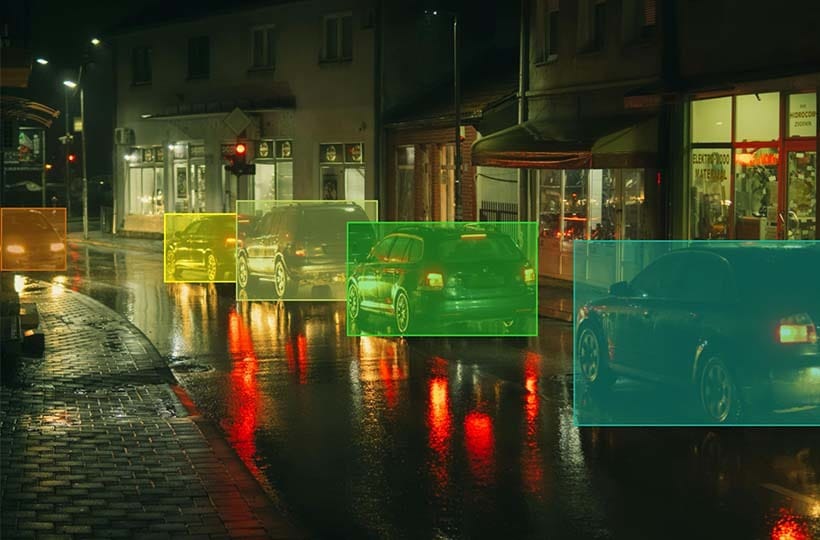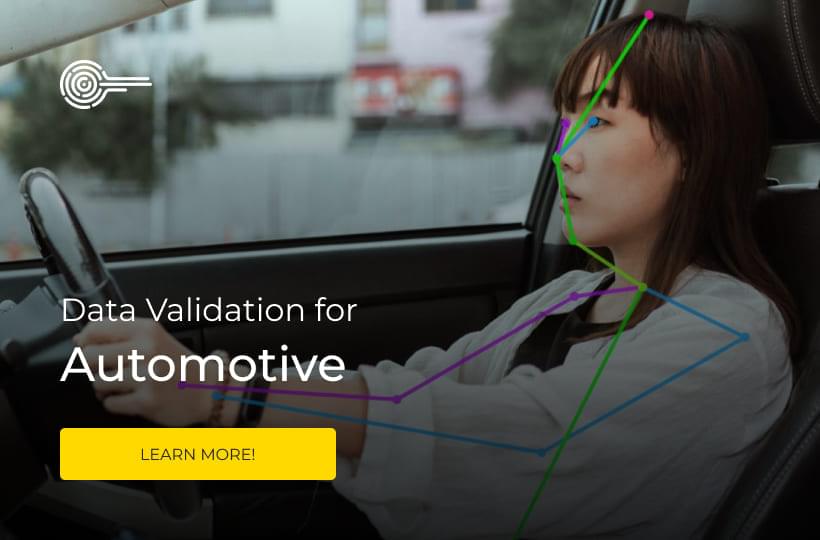Enhancing Road Safety with AI in Automotive Solutions

AI in automotive is pivotal for road safety. More specifically, it enables advanced features that drastically reduce accidents. For instance, AI-powered ADAS systems provide collision avoidance, lane departure warnings, and adaptive cruise control, boosting vehicular safety. Beyond individual vehicles, AI is transforming manufacturing, production strategies, and customer interactions, reshaping the automotive sector.
Key Takeaways
- AI in automotive significantly enhances vehicle safety through ADAS such as collision avoidance and lane departure warnings.
- The U.S. AI automotive market is projected to grow significantly, indicating increased adoption and reliance on AI technologies.
- AI-driven features have proven to reduce crash rates by up to 40%, showing their effectiveness.
- AI integration impacts not only individual vehicles but also vehicle manufacturing and customer interactions.

Introduction to AI in the Automotive Industry
The automotive industry is undergoing a transformation with the integration of artificial intelligence. AI is revolutionizing how we interact with vehicles, from improving road safety to streamlining supply chains. Major players like Mercedes-Benz, Toyota, Volkswagen, Tesla, and Volvo are leading the charge. They are driving innovation and boosting efficiency through AI adoption.
Defining AI and Its Role in Automotive
Artificial Intelligence in the automotive field spans a wide range of technologies. It includes automated driving systems and real-time data analysis for proactive maintenance. AI uses machine learning, deep learning, and big data analytics to tackle complex tasks that once required human intervention. It enhances areas like autonomous driving, route planning, predictive maintenance, and driver assistance systems, making our journeys safer and more enjoyable.
Brief History of AI in Cars
The history of AI in cars started with simple tasks like cruise control in the 1950s. Over the years, AI has evolved into sophisticated systems capable of real-time decision-making. Innovations like Mercedes-Benz's Autonomous Emergency Braking (AEB) and Tesla's Autopilot showcase the evolution from basic automation to advanced predictive systems.
Key Technologies Driving AI Advancement
Several key technologies are driving AI adoption in the automotive industry:
- Machine Learning: Used for pattern recognition, predictive analytics, and automated decision-making.
- Sensor Fusion: Combines data from multiple sensors (LIDAR, radar, cameras) for a detailed view of surroundings.
- AI-driven Diagnostics: Employs AI algorithms for predictive maintenance, improving vehicle reliability.
- Generative Design: Uses AI to optimize vehicle designs for performance and aerodynamics, leveraging CAD and CAE data.
The Importance of Road Safety
Road safety is a pressing issue, with accidents causing countless deaths and injuries globally each year. The introduction of road safety technology offers a solution to these challenges, reducing risks effectively.
Current Statistics on Road Accidents
Every year, road accidents lead to a massive global crisis, resulting in tens of thousands of fatalities and injuries. The integration of AI technology in vehicles is a significant step towards addressing these statistics. Notable advancements include:
- Nauto: Founded in 2015, utilizes AI-powered cameras and sensors to enhance driver safety.
- Waymo: Established in 2016, offers advanced technology providing a 360-degree view of the vehicle's surroundings.
- Samsara: Founded in 2015, employs AI systems to identify and mitigate unsafe driving behaviors such as hard braking and rapid acceleration.
These companies aim to significantly reduce accidents and improve overall road safety. By continuously learning from extensive driving data, AI technology for vehicles is evolving to create safer roads.
Factors Contributing to Road Hazards
Several factors contribute to road hazards, which can be mitigated with advanced road safety technology:
- Vehicle Malfunction: Issues such as brake failure or tire blowouts, which can be prevented with predictive maintenance technologies.
- Human Error: Distractions, fatigue, and impaired judgment. AI technology for vehicles can monitor driver behavior and provide real-time alerts to enhance awareness and response.
- Adverse Road Conditions: Poor weather, road construction, and unexpected obstacles. AI systems in vehicles can adapt to changing conditions and assist in safer navigation.
By leveraging cutting-edge road safety technology, we can significantly reduce the impact of these factors. This move towards a future with fewer accidents and safer driving conditions is within reach.

AI Technologies Enhancing Vehicle Safety
AI is transforming vehicle safety, bringing advanced innovations to drivers and passengers. The integration of AI technologies is key to improving road safety and delivering a better driving experience. At the heart of this transformation are computer vision and sensors.
Computer Vision and Sensors
Computer vision, combined with advanced sensors, empowers vehicles to accurately detect and respond to road conditions. Autonomous vehicles rely on these AI-driven systems to interpret data from their surroundings. This enables them to make decisions in real-time. Sensor fusion technology plays a critical role, combining data from multiple sensors to provide a detailed understanding of the vehicle's environment. This ensures precise navigation and safety measures.
Machine Learning Algorithms
We use machine learning algorithms to interpret sensor data, allowing vehicles to react dynamically to changing road conditions. These algorithms continuously learn, improving their predictive accuracy over time. They identify hazards and risk factors before they happen. Machine learning in automotive systems is essential for optimizing vehicle reactions and improving safety. Advanced algorithms analyze vast amounts of data to predict component failures, preventing accidents caused by mechanical issues.
Advanced Driver Assistance Systems (ADAS)
Advanced Driver Assistance Systems (ADAS) showcase the significant advancements in AI within the automotive sector. Features like automatic braking, lane-keeping assistance, and adaptive cruise control are now standard in modern vehicles. Driven by AI, ADAS helps reduce accidents, ensuring safer journeys for everyone. These systems not only respond to immediate threats but also offer proactive safety measures. They contribute to the broader goal of autonomous vehicles revolutionizing road safety.
Predictive Maintenance Using AI
Predictive maintenance has transformed vehicle care by using AI to predict repairs before they're needed. This method is far better than old ways, saving money and improving how things work. For example, Toyota's Smarter Plant Solution cut unplanned downtime by 30% and boosted equipment efficiency by 25%.
How Predictive Analysis Works
AI systems use real-time sensor data to forecast when equipment might fail. These systems analyze performance indicators to spot patterns that signal trouble. Thanks to vast datasets, like Pitstop’s software, predictive accuracy improves, enabling early maintenance.
Minimizing Breakdown Risks
Using AI for diagnostics isn't just about saving time and money. It also extends the life of vehicles and equipment. Volvo Trucks, for example, saw up to 25% fewer unplanned stops thanks to AI predictive maintenance.
| Control | Predictive Maintenance | Cost Impact |
|---|---|---|
| AssetWorks (Long Beach) | Implemented on 600+ vehicles | $809,500 annual savings |
| Pitstop Software | 147 predicted tow events | $61,000 in towing costs saved |
| Volvo Trucks | Incorporated AI diagnostics | 25% reduction in unplanned stops |
Autonomous Vehicles and Safety
Autonomous vehicles are transforming road safety by integrating advanced AI technologies. These self-driving cars have multiple layers, each adding unique safety features. This integration is a game-changer for the future of driving.
Level of Autonomy and Safety Features
Autonomous vehicles range from Level 1, with basic driver assistance, to Level 5, fully autonomous. Tesla's vehicles, for example, use AI assistants, radar, and cameras for safety. Yet, the biggest challenge is ensuring they can handle diverse and unpredictable conditions.
Real-world Applications and Testing
Testing and validation are key to bringing autonomous vehicles to market. Waymo has driven over 20 million miles, gathering vital data. Motional has reported over 100,000 self-driven rides without incident, showing their safety promise. Zoox's first robotaxi ride in 2023 highlights the practical use of these technologies.
AI in safety regulation requires continuous adaptation with real-world data. For more on this effort, you can learn about the NHTSA’s approach to automated vehicles.
Impact on Traffic Laws and Regulations
As autonomous vehicles become more common, updating traffic laws is essential. The regulatory landscape is evolving to ensure safety and public trust. Detailed maps and blockchain technology are expected to enhance transparency and accountability in autonomous systems.
Advanced driver assistance systems, like Tesla's autopilot, are also reshaping traffic regulations. While they have the power to reduce accidents, concerns about their reliability and safety remain. A balanced approach to regulation is necessary to unlock their full safety and efficiency benefits.
Driver Monitoring Systems Powered by AI
The automotive industry is embracing AI to boost road safety, with driver monitoring systems playing a key role. These systems use AI to detect distracted or fatigued driving in real-time. They intervene promptly to prevent accidents.
Alerts for Distracted Driving
Distracted driving is a major issue, leading to over 1,000 injuries and nine fatalities daily in the U.S. AI-powered driver monitoring systems employ facial recognition and eye-tracking to gauge driver distraction.
- Real-time alerts for phone usage and non-focus on the road.
- Safety prompts through audio alerts and vibrating seat belts.
- Integration with other vehicle safety systems like lane departure warning.
These systems can spot inappropriate smartphone use, prompting immediate actions to ensure driver focus. This significantly boosts road safety.
Fatigue Detection Technologies
Fatigue is a major contributor to road accidents, and AI has made significant progress in addressing this. Advanced systems detect driver fatigue, like drooping eyelids and micro-sleep episodes, through advanced algorithms.
- Detects early signs of fatigue like drooping eyelids.
- Provides alerts through audio and climate control adjustments.
- Automates control handoff from driver to vehicle during extreme fatigue.
Companies like Cipia have developed systems that enhance personalization and safety in the cabin. These systems scan the cabin, adjusting seats, mirrors, and climate controls based on individual preferences detected by AI.
Driver monitoring systems aim to prevent accidents caused by fatigue and distraction. They also contribute to a safer and more personalized driving experience. Enhanced by AI, these systems are a significant step towards reducing road hazards and promoting better driving practices.
AI for Enhanced Traffic Management
The integration of artificial intelligence into traffic management systems is revolutionizing urban mobility. AI traffic management helps cities reduce congestion and improve road safety. Smart traffic systems use real-time data to adjust to changing traffic conditions. This ensures a smoother flow for both vehicles and pedestrians.
Smart Traffic Lights and AI Algorithms
AI-driven traffic control systems are transforming major cities. For example, Los Angeles and Pittsburgh have seen travel times decrease by 25% to 40%. These systems use machine learning to predict traffic patterns and adjust signals dynamically.
The Future of AI in Automotive Safety
The evolution of automotive AI is transforming vehicle safety. New trends and innovations are leading to safer roads and more efficient travel. Ethical AI use is key to earning public trust and acceptance.
Emerging Trends and Innovations
Exciting developments are shaping the future of automotive AI. The integration of AI-driven Advanced Driver-Assistance Systems (ADAS) is a major trend. These systems, including automated emergency braking and lane-keeping assistance, are vital for road safety.
AI-powered predictive maintenance is also growing. It reduces vehicle breakdowns and extends vehicle lifespan, saving costs and improving reliability. AI simulations in vehicle testing are another innovation. They enable virtual tests for safety and performance, cutting costs and time.
| AI Technology | Application | Benefits |
|---|---|---|
| Predictive Maintenance | Vehicle Monitoring | Reduced breakdowns, cost savings, increased reliability |
| ADAS | Driver Assistance | Improved road safety, accident reduction |
| AI Simulations | Vehicle Testing | Cost and time efficiency, better performance evaluation |
Public Acceptance
As AI becomes more prevalent in automotive safety, ethical use is critical. Ensuring AI algorithms make fair and transparent decisions is essential. Transparency, rigorous testing, and ethical guidelines are vital. Building public trust requires clear communication about AI's benefits and risks.
Public acceptance also depends on AI's reliability in real-world scenarios. Initiatives like transparent data privacy and collaboration with regulatory bodies are essential. With self-driving vehicles set to be 1 in 10 by 2030, ethical AI deployment will shape public perception.
The Road Ahead for AI in Automotive Safety
AI has already made a significant impact on automotive safety, reducing accidents and improving vehicle performance. It uses machine learning, real-time sensors, and predictive maintenance to enhance safety standards. These advancements are set to revolutionize the automotive industry.
Every year, road accidents claim around 1.35 million lives worldwide. Technologies like Tesla's Autopilot and Volvo's City Safety are changing the game. They move from just reacting to accidents to preventing them. Machine learning algorithms analyze vast data to predict and prevent crashes, boosting road safety.
FAQ
What key technologies are driving AI advancements in the automotive industry?
The automotive industry is seeing advancements through machine learning, sensor fusion, and AI-driven diagnostics. These technologies improve vehicle safety by enabling predictive maintenance and advanced driver-assistance systems (ADAS). They also interpret real-time data efficiently.
How does AI contribute to enhanced road safety?
AI enhances road safety by powering features like automatic braking, lane-keeping, and adaptive cruise control. These systems reduce human error and react quickly to road conditions. This significantly lowers the risk of accidents.
What role does predictive maintenance play in the automotive industry?
Predictive maintenance uses AI to forecast repair needs, enabling proactive vehicle care. It reduces the risk of unexpected breakdowns, extends vehicle lifespans, and ensures optimal operation. This is critical in fleet management.
How is AI used in autonomous vehicles?
AI supports various levels of autonomy in autonomous vehicles, from semi-autonomous to fully autonomous. It uses computer vision and machine learning to interpret sensor data. This ensures safe and efficient navigation.
What are some real-world applications of AI in autonomous vehicle testing?
AI is currently being tested in controlled environments and selected cities. The systems are updated continuously with real-world data. This improves accuracy and safety.
How does AI improve driver safety through monitoring systems?
AI-powered monitoring systems use facial recognition and eye-tracking to assess driver alertness. They provide real-time alerts for distracted or fatigued driving. This prompts necessary corrective actions to maintain road safety.
What advancements in AI traffic management are improving road safety?
AI traffic management includes smart traffic lights that adapt to real-time conditions. This optimizes traffic flow and reduces congestion. Integration with public transportation systems also improves efficiency and safety through optimized scheduling and routing.
What are the ethical considerations for AI in automotive safety?
Ethical considerations include ensuring data privacy and mitigating biases in AI algorithms. Maintaining public trust is also critical. As AI becomes more integrated into critical safety systems, transparency and accountability are essential for widespread acceptance.
How does AI impact the regulatory landscape in the automotive industry?
AI's integration into the automotive industry requires evolving traffic laws and regulations. This ensures safety and public confidence. Regulators focus on maintaining high safety standards and adapting to new technologies for secure implementation.

